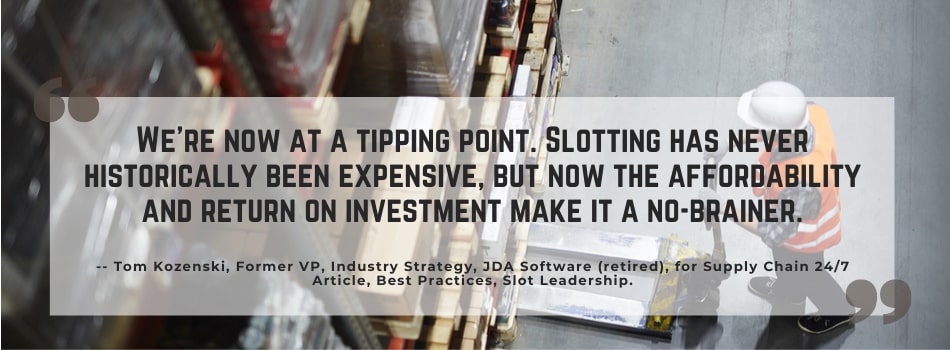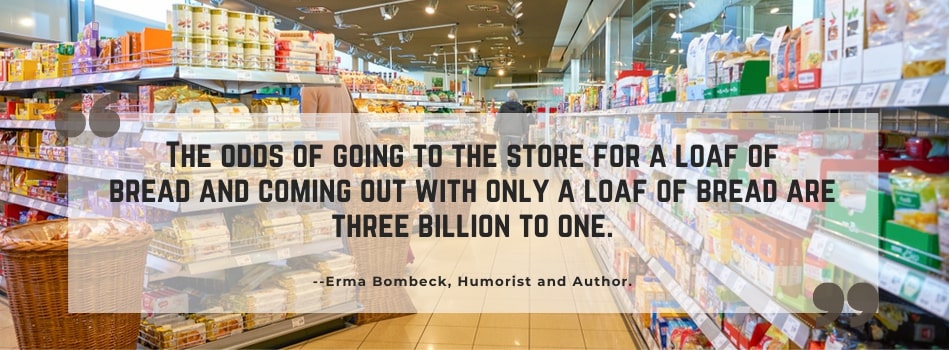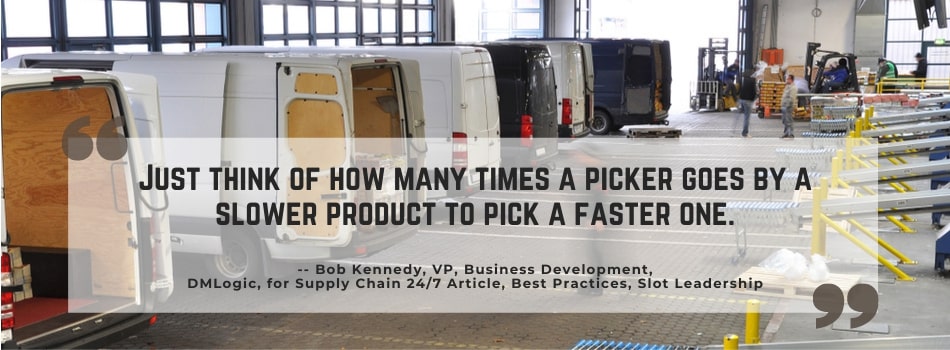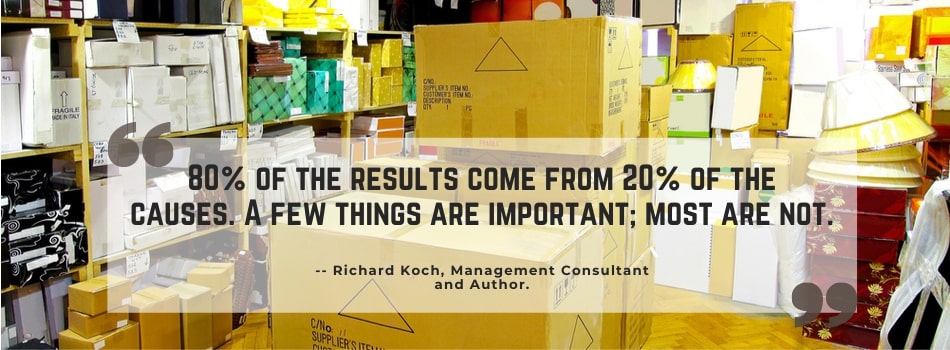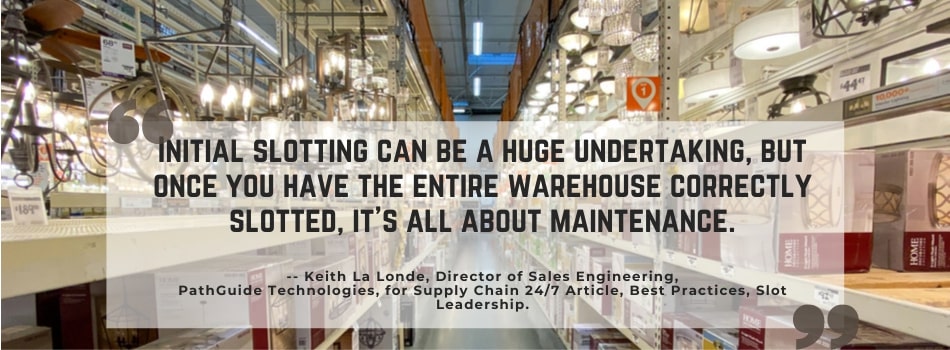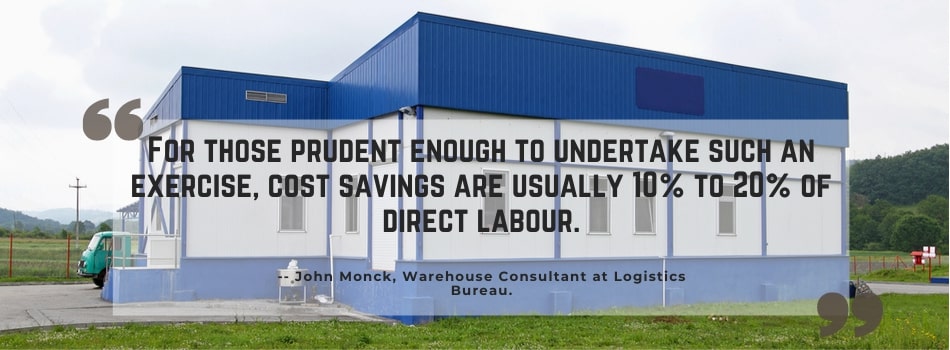One of the key things you can do in your warehouse to improve the productivity of your staff as far as picking and packing go is to institute a system of product slotting.
How Supermarkets Slot Products
You may well ask: “What the hell is product slotting?”
To answer this question, let me give you an analogy. When you walk into a supermarket you will invariably find that the fast-moving products—such as milk, and eggs, and bread—are stocked at the back of the store.
Why do the stores do that? It’s because they want you to walk through the entire store, seeing all these other products that you might buy. On the way through you may pick up a packet of biscuits or a chocolate, and by the time you leave you’re laden with goods you didn’t intend to buy.
In effect, retail stores slot their products (understandably) in a way that is optimal for sales, not ergonomics.
How Warehouses Slot Products
The supermarket example above represents the exact opposite of what you should do in your warehouse. Here, you put the fastest-moving products closest to the packing and dispatch area to minimise the movement of warehouse staff. You want to lay out your warehouse so your picker’s travel the least distance.
Simply put, warehouse product slotting is about putting the right product in the right place so you can pick it in the most efficient way.
Here’s another way to look at it. Imagine the warehouse as a big box. On one side of the box we have dispatch. We will site our fast-moving products near dispatch so that we are not walking up and down all the time to pick them. Our slower-moving products will be at the back of the box.
The Nitty-Gritty of Product Slotting
John Monck, Logistics Bureau’s warehouse expert and a specialist in slotting, further explains the concept of product slotting.
“To start with, find out which products are picked the most and place them as close as possible to what we call the centre of gravity of the warehouse, where dispatch is situated. You look at where the picker starts and place it as close as possible to that point—that’s the golden zone.”
Monck advises warehouse managers to identify the 20 percent of their products that take up 80 percent of warehouse activity and place them in what he calls the golden zone.
He warns, however, that you could cause congestion in the warehouse if you put ALL your fast-moving products near the dispatch—something that would negate the benefits of product slotting. So take that into account when doing your planning.
Think Vertically as well as Horizontally
You obviously want to get those fast-moving products nearer to dispatch, so it’s important not only to think horizontally but vertically as well.
In other words, slow-moving products go up on the top shelves because it takes longer to get them, while faster-moving products come down on the bottom shelves.
If you have a large, complex warehouse accommodating hundreds of products and employing dozens of workers, trying to work out an efficient product slotting system on a whiteboard would be a long-winded process. You need sophisticated software to manage this. If there is any degree of complexity, you’ve got to do it properly, so the use of digital technology is invaluable.
But if you have a smaller warehouse with a limited amount of product, you can try to do this yourself. It’s as simple as:
- Analysing your different products’ input
- Identifying your faster-moving products—the A-lines—getting them closer to dispatch, and putting them lower down so they’re easier to get to for picking.
- Placing the B-lines, followed by the C-lines, further back and higher up.
How to save up to 30% on Labour Costs—Per Pick!
John Monck explains, in a Supply Chain Secrets YouTube video, how he helps his clients attain a 15 to 30 percent reduction in warehouse costs, simply by introducing product slotting practices.
“When we work with a client the first thing we do is try to understand the operation, understand the flow through the warehouse. What we are looking for in that is how to minimise the pick path. Some clients will go only one way, other clients will go both ways.
“Then we need some information from a client, specifically:
- How they pick a particular product
- How many products per order
- The dimensions of the product.
“Once we have the data, the next step is to build a model. We build a model with the software that we’ve got. We bring together the data, the understanding of the restraints, how the business operates, and we run an optimisation.”
“What we look for here is where to place the product to minimise the pick path. We then give the client a product placement plan based on their business rules.”
The gains from implementing a product slotting system, he says, are “enormous”.
“The type of benefits we see here can be anything from 15 to 30 percent on labour costs—per picking!”
Slotting seems Obvious, but many Companies Just Don’t do It
The takeaway from John’s comments is that you can make significant savings on labour costs in your warehouse by slotting products and putting them in the right place. This fact amazes a lot of people.
It is such a logical thing when you think about it. Product slotting is just one of those small things that can make an enormous difference but many companies just don’t do it. It is really important because it provides the essence of how the warehouse will operate.
If you’re not doing product slotting, what are you waiting for?
If you have any questions or input to offer on product slotting, please do comment below, and if you haven’t already subscribed to the Supply Chains Secrets YouTube channel, I can highly recommend doing so. We have new videos jam-packed with supply chain and logistics tips coming out every Wednesday.
Editor’s Note: This post was originally published on November 17, 2020, under the title “Improve your Warehouse Productivity Through Product Slotting” on Logistics Bureau’s website.

